There’s something magical about the way Mediterranean sunlight transforms humble, whitewashed walls into canvases of light and shadow. This distinctive aesthetic—bright white surfaces contrasted against an impossibly blue sky—has become synonymous with Greece, drawing photographers, artists, and dreamers seeking visual simplicity and natural luminosity.
Here is a list of 15 places across Greece where this iconic interplay of light, architecture, and landscape achieves its most perfect expression.
Oia, Santorini
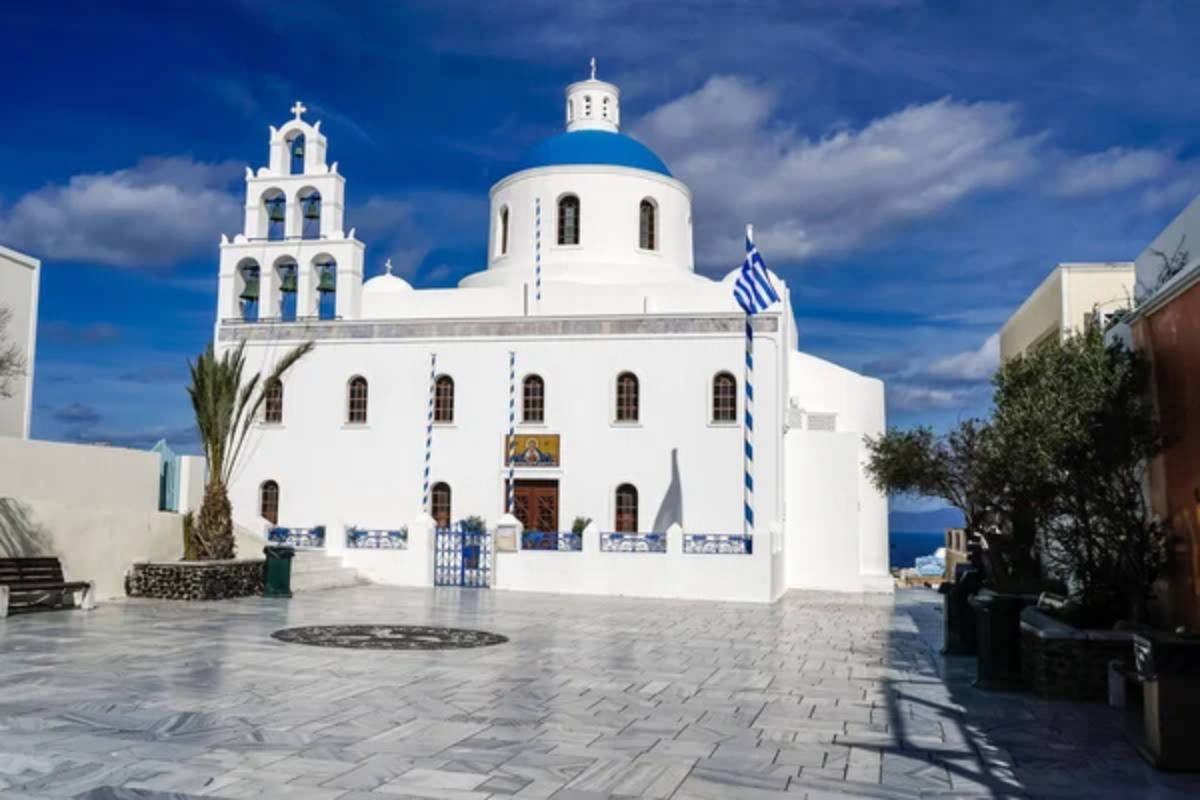
The cascading white buildings of this clifftop village create a three-dimensional canvas that captures every nuance of light from dawn to dusk, with sunset transforming flat surfaces into gradients ranging from gold to rose. Blue-domed churches provide perfect counterpoints to the whitewashed landscape, their rounded forms creating shadows that shift throughout the day like natural sundials marking Mediterranean time.
The village’s position facing west creates the ideal angle for afternoon photography when sun rays hit the curved architecture at angles that emphasize every handcrafted imperfection in centuries-old plasterwork. Bougainvillea vines add strategic splashes of magenta against the monochrome backdrop, their vibrant presence making the surrounding whiteness appear even more luminous through contrast.
Mykonos Town, Mykonos

Deliberately designed narrow alleyways create dramatic shadow patterns that change hourly as sunlight moves across the sky, offering photographers different compositions throughout the day without changing locations. The famous windmills standing sentinel above the town provide larger-scale interplays between sunlight and whitewash, their cylindrical forms catching light in ways that flat surfaces cannot.
Residents maintain their buildings with fresh paint annually before tourist season, ensuring the brightest possible white surfaces to maximize the reflective quality that defines the island’s distinctive luminosity. Morning light reveals subtle blue undertones in the whitewash—a traditional addition of louláki (blue powder) originally used to enhance brightness in an era before optical brighteners existed in paint.
Like Travel Pug’s content? Follow us on MSN.
Lindos, Rhodes

The ancient acropolis rising above this perfectly preserved village creates a dramatic backdrop for one of Greece’s most complete expressions of traditional Dodecanese architecture. Rooftop terraces painted in reflective white chalk create outdoor living spaces designed specifically to capture sea breezes while reflecting rather than absorbing the intense summer heat.
The deliberate absence of right angles in traditional construction creates organic forms that interact with sunlight in constantly changing ways, with curved corners softening shadows throughout the day. Morning light arrives gradually over the eastern mountains, creating a daily light show as individual buildings emerge from darkness into brilliant illumination like a slow-motion theatrical reveal.
Parikia, Paros
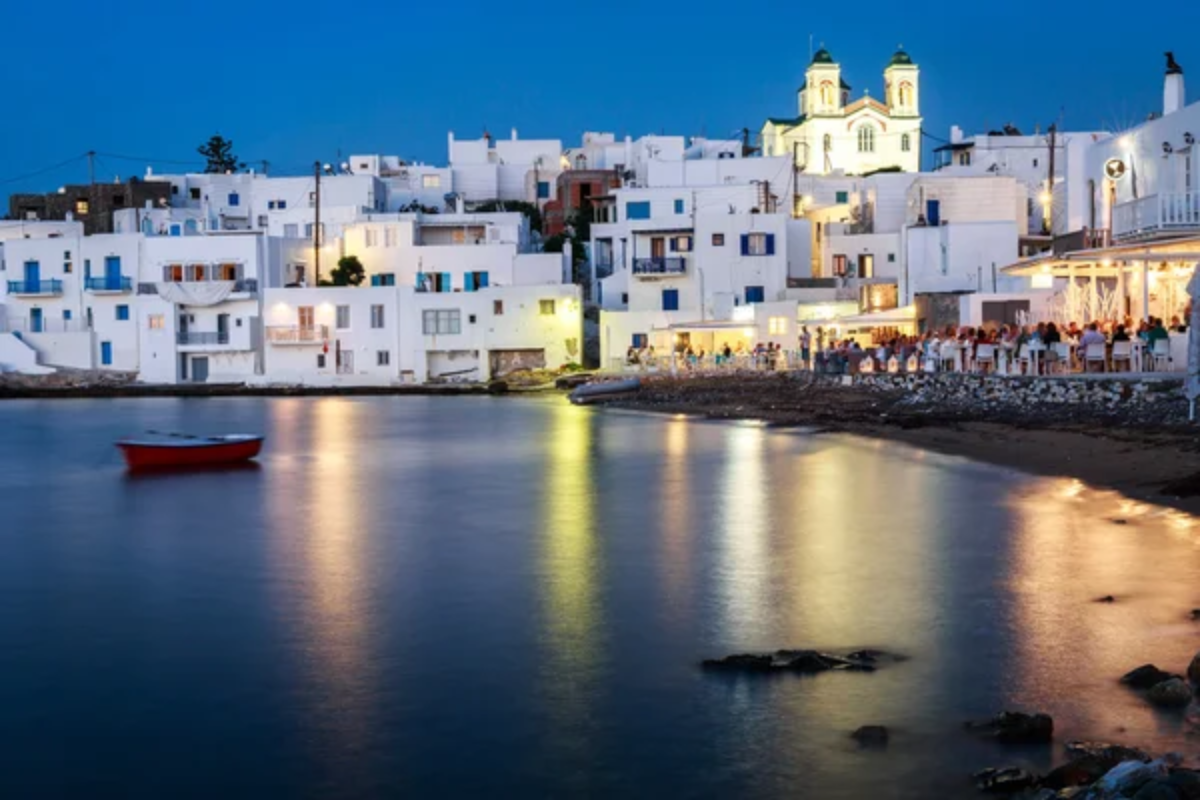
The fishing village atmosphere persists alongside tourism in this island capital, where white buildings frame the working waterfront, their brightness creating a distinctive light quality that seems to illuminate from below as much as above. The famous Church of a Hundred Doors (Panagia Ekatontapyliani) demonstrates how even massive structures maintain the visual lightness characteristic of Cycladic design through the strategic use of white surfaces that appear to reduce physical weight.
Marble remnants from ancient quarries incorporated into modern construction create unexpected moments of luminance as these crystalline surfaces catch sunlight differently than surrounding plasterwork. Evening brings a magical blue hour when indirect light turns all white surfaces into cool blue reflectors, creating the dreamlike atmosphere that has inspired painters for centuries.
Astypalaia Town, Astypalaia
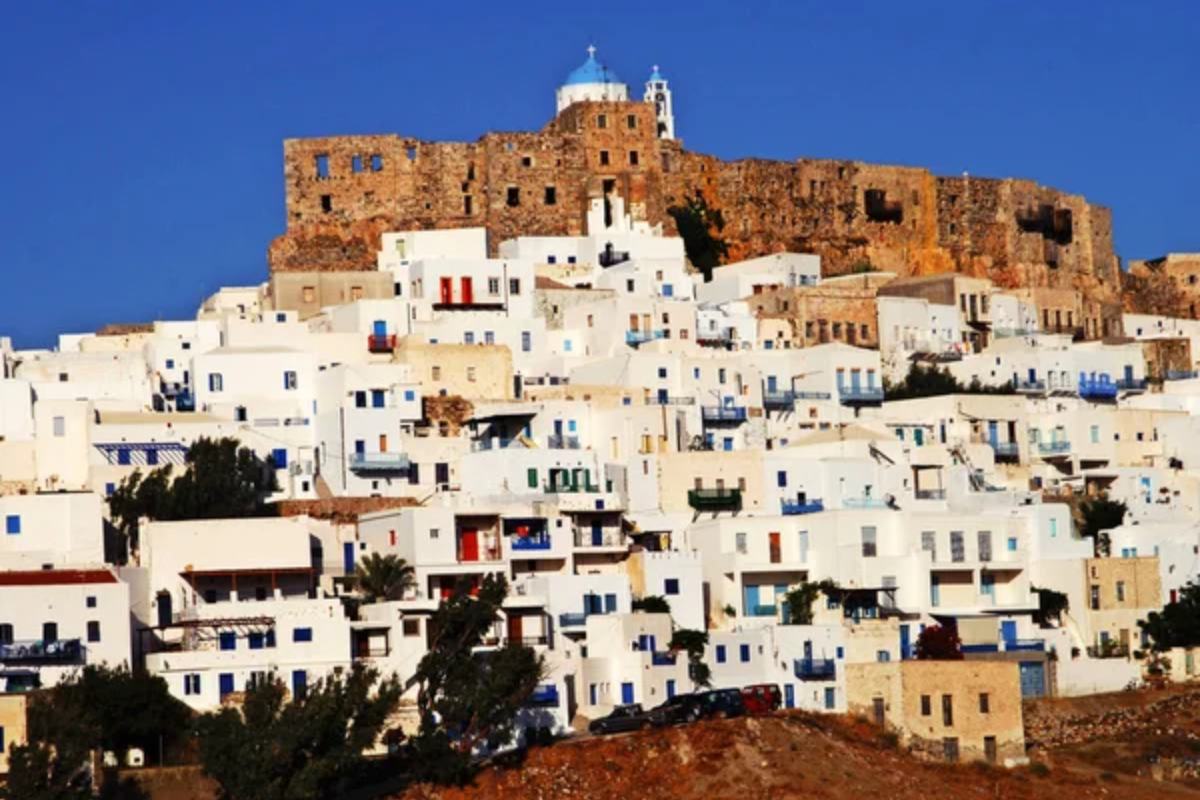
The windmill-crowned Chora perched high above a double bay creates a perfect amphitheater of white that catches morning light from the east before most visitors have awakened. Traditional flat roofs collected precious rainwater historically, but now serve as natural observation decks where the contrast between the white built environment and blue natural surroundings reaches its most dramatic expression.
Venetian influences appear in architectural details that create more elaborate shadow patterns than typically found in simpler Cycladic styles, adding visual complexity to the sunlight dialogue. The island’s butterfly shape creates unique atmospheric conditions where light often reflects off surrounding water to illuminate building undersides, eliminating harsh shadows during certain hours.
Like Travel Pug’s content? Follow us on MSN.
Naxos Chora, Naxos
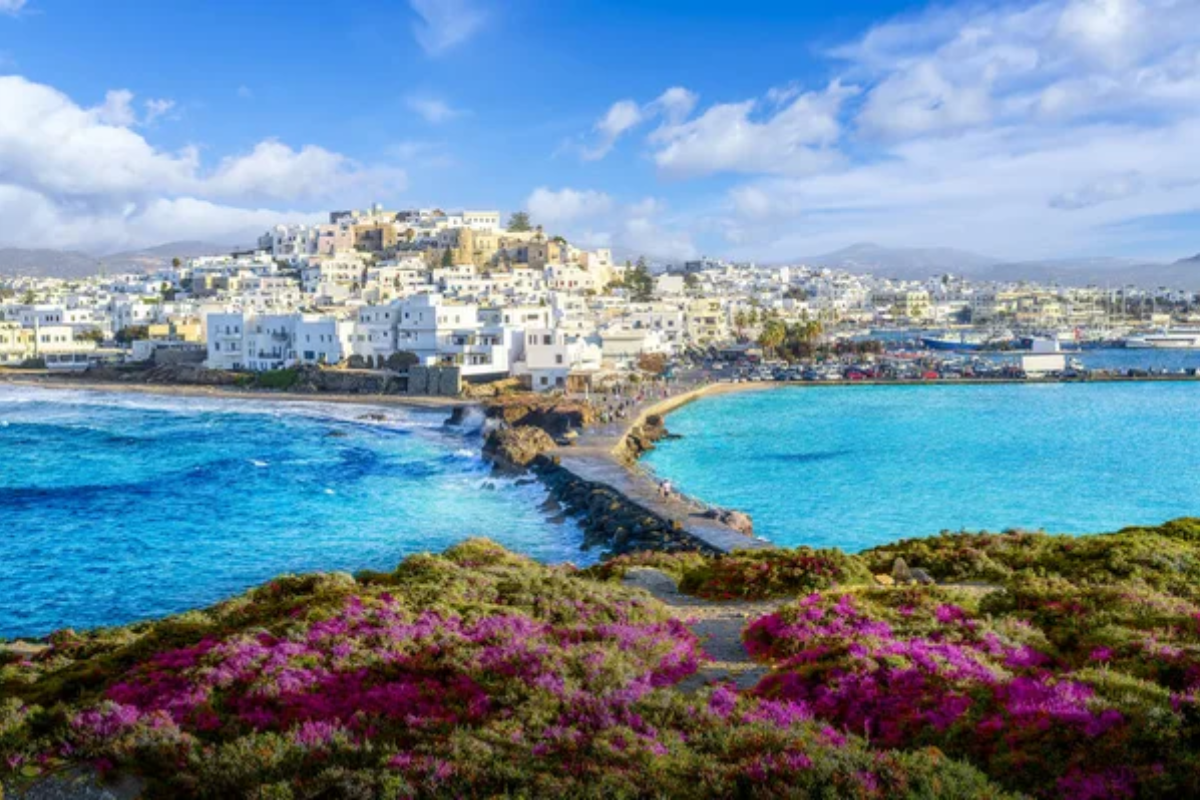
The marble Portara (Apollo’s Temple doorway) frames brilliant white buildings seen through its ancient opening, creating a perfect conversation between classical and vernacular architecture united by the same Aegean light. Traditional towers built by Venetian settlers introduce vertical elements rarely seen in Cycladic architecture, their height creating elongated shadows that trace slow paths through village pathways.
The Kastro (castle) district features buildings constructed directly against protective walls, demonstrating how defensive necessity gradually evolved into the aesthetic unity that now defines Greek island architecture. Afternoon light penetrates deeper into narrow streets than morning rays, completely transforming the visual experience of identical pathways at different hours.
Hora, Folegandros
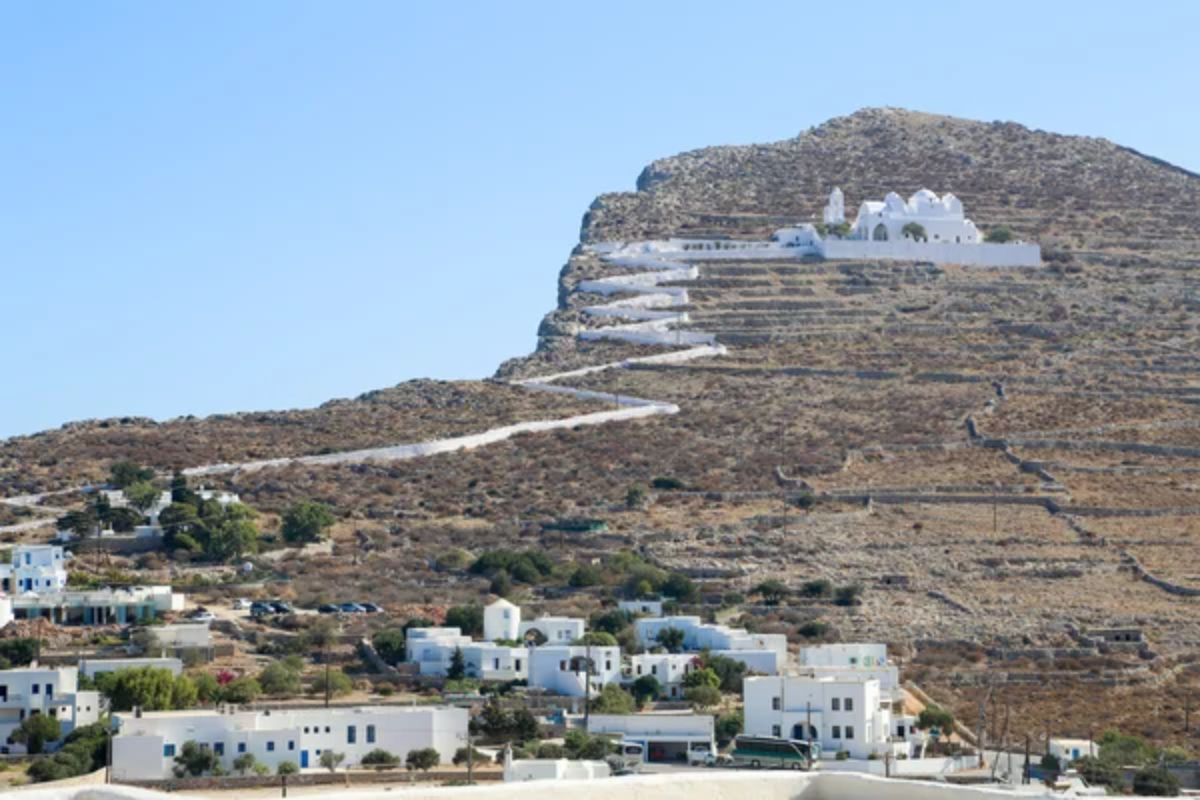
The clifftop setting of this less-visited island creates dramatic contrasts between whitewashed buildings and the dark volcanic rock upon which they’re built, emphasizing the man-made intervention in the natural landscape. The central square, paved in distinctive black and white pebble patterns, creates a graphic ground plane that complements the surrounding white architecture through deliberate contrast.
Buildings follow the natural contours of the dramatic landscape rather than imposing geometric order, creating organic compositions that change appearance dramatically depending on viewing angle and light direction. The island’s relative remoteness has preserved traditional construction methods including hand-applied plaster with distinctive textural qualities that interact with sunlight differently than smoother modern surfaces.
Plaka, Milos
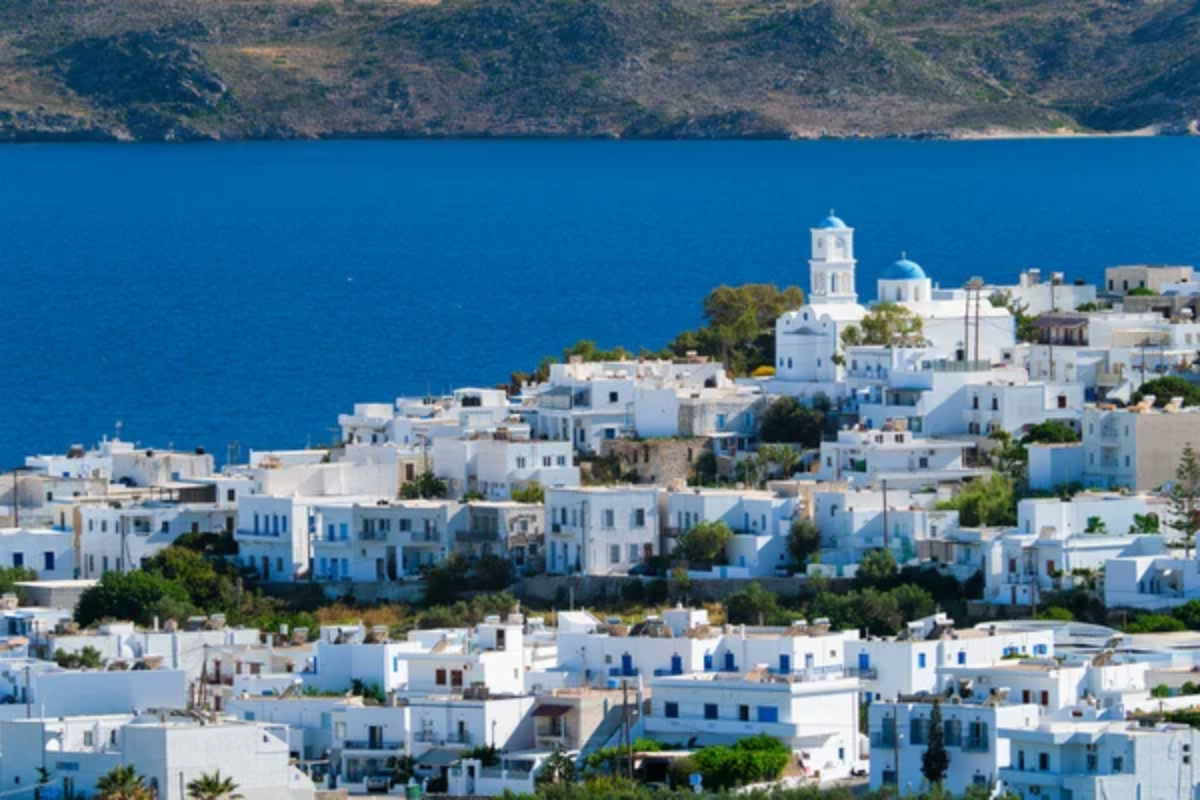
White structures built into volcanic cliffs demonstrate how Greek vernacular architecture adapts to seemingly unbuildable sites, with vertical surfaces becoming opportunities for dramatic light play against geological formations. The village’s labyrinthine layout evolved from pirate defense strategies rather than urban planning, creating unexpected spaces where sunlight enters from surprising angles throughout the day.
Catacombs beneath the village housed early Christian communities, their whitewashed underground passages demonstrating how this aesthetic served practical purposes by maximizing limited light sources before becoming a cultural signature. Sunset brings a phenomenon locals call “the pink hour” when reflections from the island’s distinctive coastal rocks cast a rose-colored glow across all-white surfaces, creating a daily color transformation visible nowhere else.
Like Travel Pug’s content? Follow us on MSN.
Apollonia, Sifnos

Culinary traditions and architectural excellence merge in this island capital, where whitewashed buildings house some of Greece’s most respected traditional cooking. The exterior simplicity contrasts with rich experiences within. The settlement follows natural topography in concentric rings climbing the hillside, creating tiers of white that catch sunlight at different angles simultaneously, depending on the hour.
Distinctive Sifnian chimney pots introduce sculptural elements to rooflines, their white forms creating complex shadows across otherwise simple building volumes throughout the day. The local pottery tradition features white clay native to the island, extending the chromatic harmony between buildings and everyday objects that share a distinctive luminous quality.
Chora, Patmos
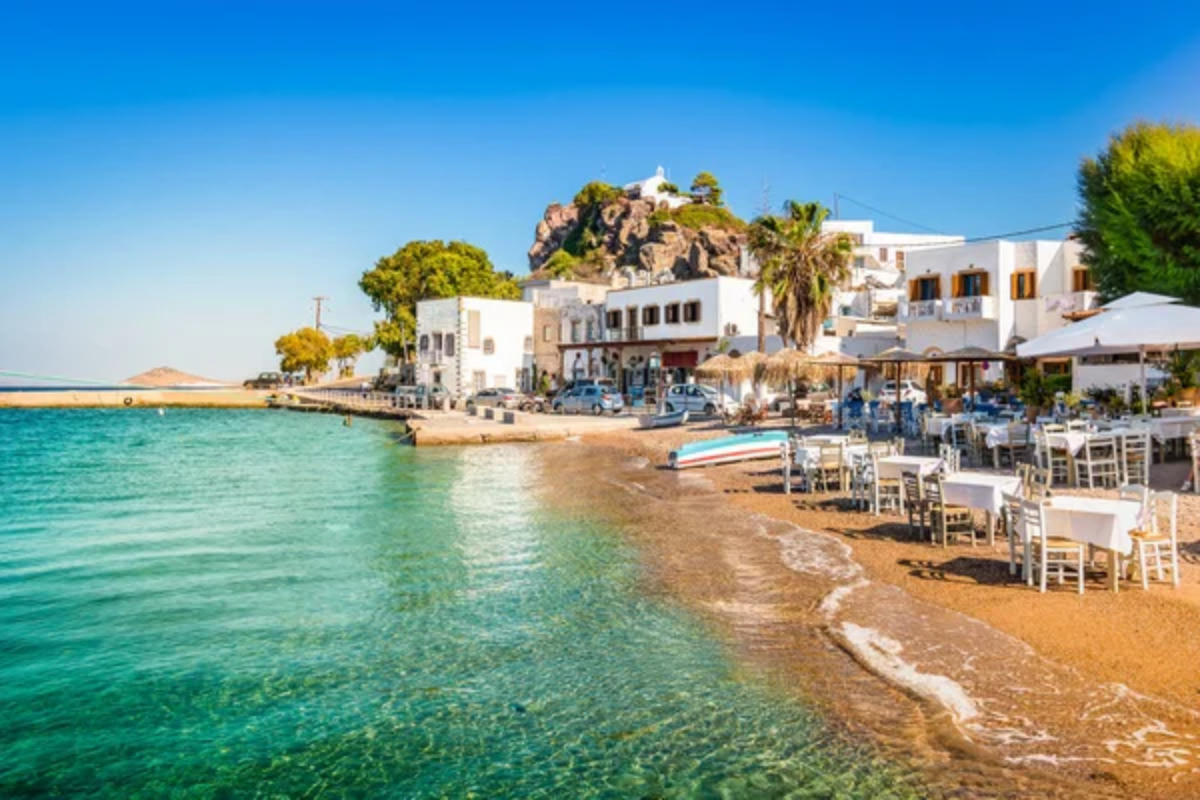
Monastic influence gives this hilltop settlement architectural gravitas unusual for its size, with the imposing Monastery of Saint John creating a spiritual crown above perfectly aligned white cubic forms. The settlement’s high position catches first and last light, extending the photography’s “golden hour” longer than in villages located at lower elevations or in valleys. Building placement follows ancient pathways used by pilgrims approaching the monastery, creating a village form determined by spiritual circulation patterns rather than secular considerations.
The island’s connection to Saint John’s apocalyptic visions creates a fascinating context for a place where light quality can indeed feel revelatory, particularly during dramatic weather transitions common in this part of the Aegean.
Pyrgos, Tinos
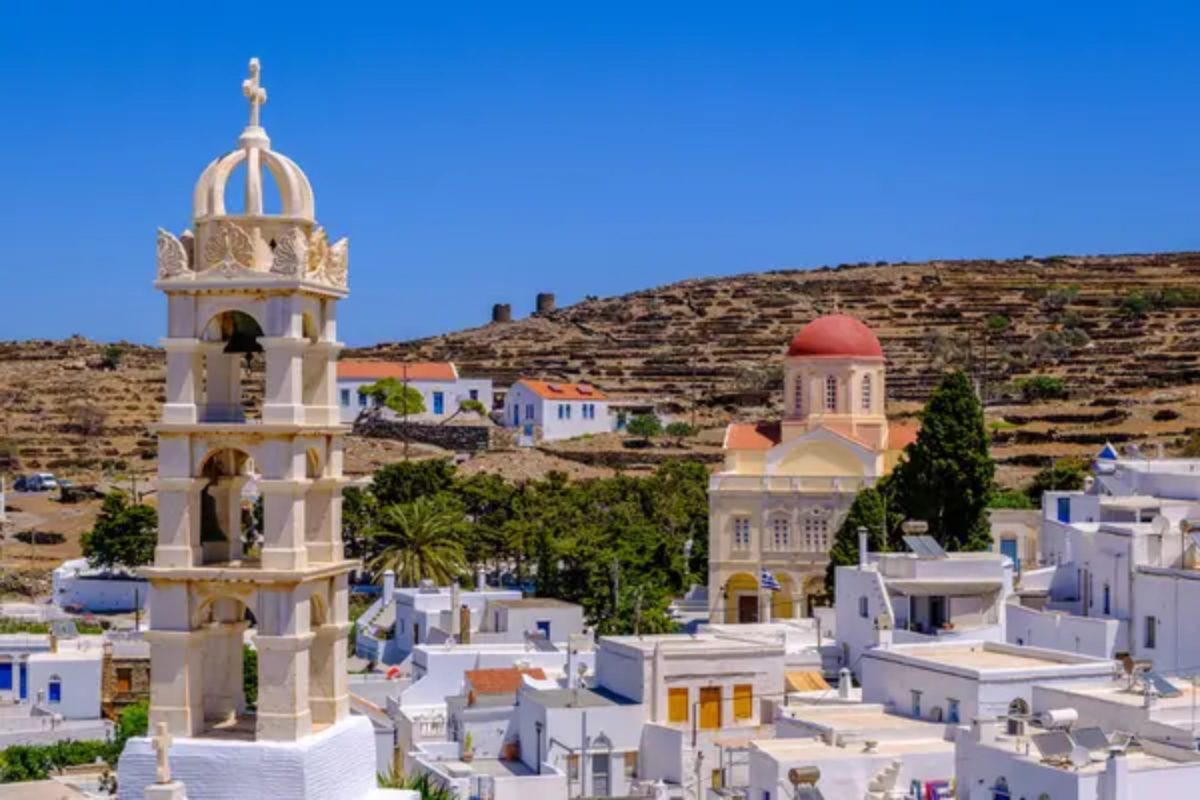
The renowned marble crafting tradition of this island finds expression even in humble buildings, where carved lintels and doorframes create precise shadow lines that change character throughout the day. The village rises in concentric circles around a central point like an architectural seashell, creating a unified composition visible from miles away across the island landscape.
Traditional dovecotes scattered across surrounding hillsides extend the white architectural presence into the countryside, their decorative facades catching distant sunlight like miniature versions of the main settlement. Morning fog, often rolling in from the sea, creates ethereal conditions where buildings seem to float above temporary cloud layers, adding atmospheric drama to the already striking visual environment.
Like Travel Pug’s content? Follow us on MSN.
Lefkes, Paros

The marble-paved Byzantine Road leading to this mountain village prepares visitors for a settlement where white simplicity reaches profound expression through a careful relationship with the surrounding landscape. The inland location away from harsh sea winds has allowed tree growth unusual for Cycladic settings, creating interplays between dappled natural shadows and architectural geometries.
Central church complex combines Byzantine religious architecture with vernacular building traditions, demonstrating how distinct cultural influences merged to create the recognizable Cycladic aesthetic. The village’s high elevation creates a distinctive light quality with greater clarity than coastal locations, reducing the atmospheric haze that softens architectural edges elsewhere in the islands.
Chora, Amorgos
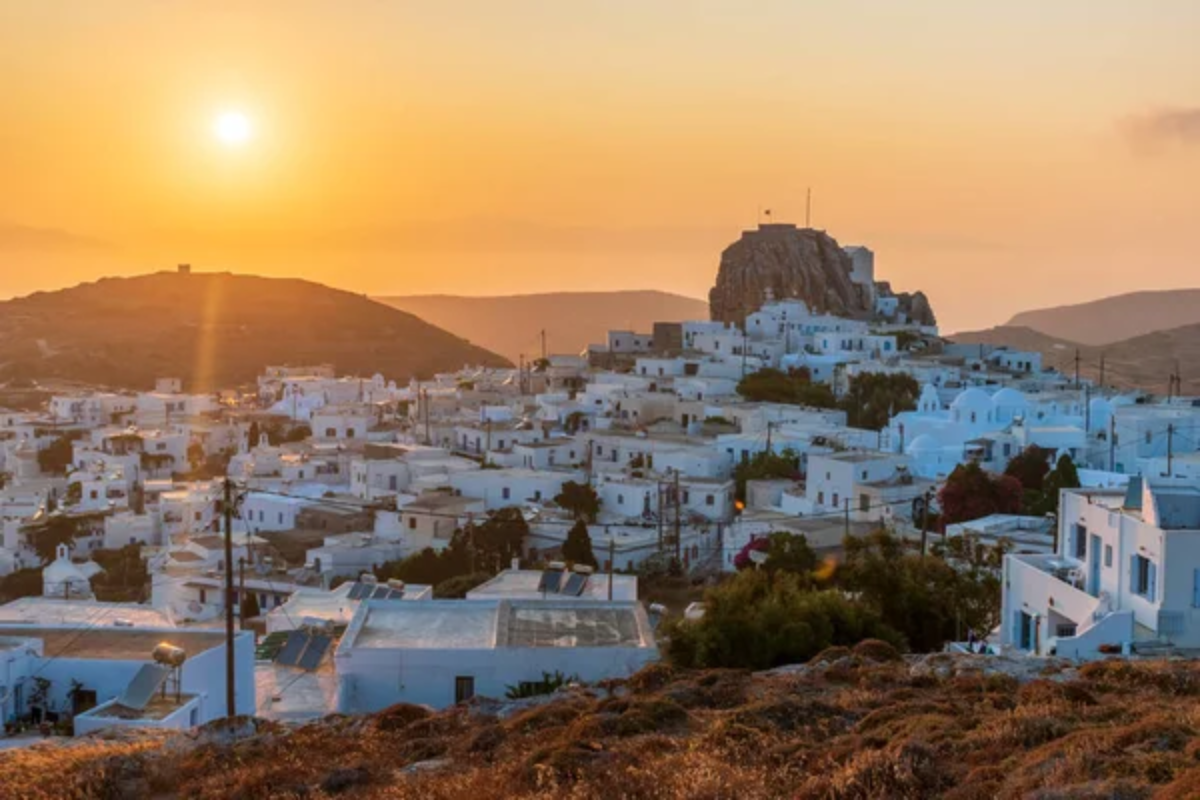
The setting for Luc Besson’s film “The Big Blue” continues attracting photographers drawn to the exceptional clarity of light that makes white surfaces appear to glow from within rather than merely reflect external illumination. The dramatic monastery of Hozoviotissa, built into sheer cliffs nearby, demonstrates how Greek Orthodox spiritual traditions embraced dramatic natural settings enhanced by architectural interventions.
The village’s eastern orientation creates particularly dramatic morning conditions when first light reveals architectural details with razor-sharp clarity before the softening effects of the midday sun. Traditional indigo fabric production on the island historically complemented the white-blue aesthetic now famous worldwide, connecting architectural colors to local craft traditions.
Molyvos, Lesvos

Stone construction distinguishes this northern Aegean town from its whitewashed southern counterparts, yet traditional houses employ whitewashed accent elements that catch sunlight in similar ways against darker backgrounds. The imposing Byzantine castle creates dramatic morning shadows across the cascading village below, creating a daily light performance as individual buildings emerge from darkness into brilliance.
The northern location creates a distinctly different light quality from the Cyclades—clearer, less intense, but with extraordinary clarity that reveals architectural details with unusual precision. Wooden balconies with white structural elements demonstrate how traditional Greek design principles adapt to different construction materials while maintaining the characteristic play of light central to the aesthetic experience.
Like Travel Pug’s content? Follow us on MSN.
Halki Town, Halki
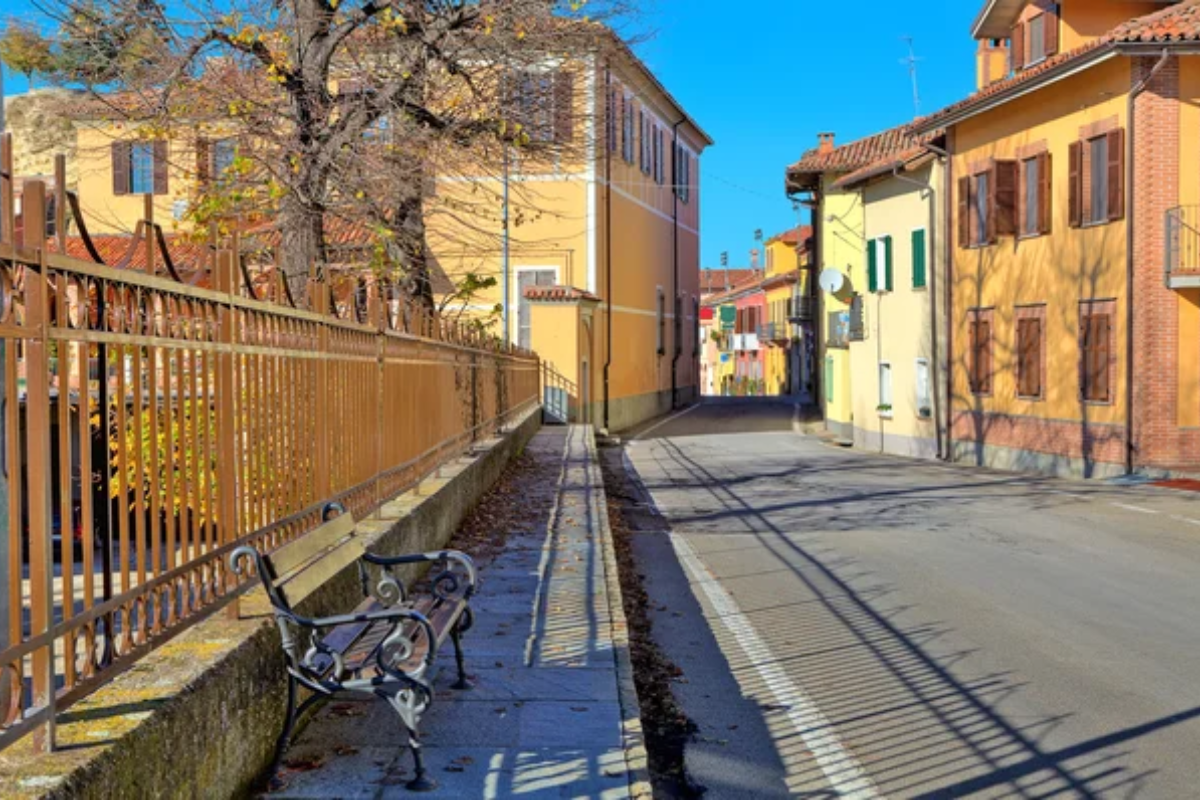
The horseshoe harbor of this tiny island creates a natural amphitheater where neoclassical mansions in pastel hues stand alongside traditional white structures, their complementary colors enhanced by intense reflected light from the sea. The abandoned settlement of Chorio above the current town offers photographers rare opportunities to document the effects of natural weathering on traditional whitewashed surfaces without restoration interventions.
Maritime traditions influence the architectural vocabulary with subtle nautical references in railings, window treatments, and decorative elements that create more varied shadow patterns than inland villages. The island’s relative isolation has preserved building traditions free from development pressure, creating a living museum of Greek island architecture in its most authentic light-catching form.
Through Light-Filled Eyes

These destinations remind us that Greece’s famous white architecture represents far more than aesthetic preference—it embodies generations of practical wisdom about living comfortably in the intense Mediterranean sun. The white surfaces reflect heat while collecting and redistributing light, transforming buildings into natural climate control systems, while creating the distinctive visual environment that now draws visitors from around the world.
What began as a local adaptation has evolved into one of the world’s most recognizable architectural signatures, a testament to how traditional knowledge can create beauty through function rather than deliberate artistic intent. For those drawn to this distinctive luminous quality, these fifteen destinations offer the purest expressions of sunlight’s ancient dance with whitewashed walls.
More from Travel Pug

- Cities Growing so Fast You Won’t Recognize Them in 10 Years
- 13 Destinations Where Tourists Regularly Regret Their Trip
- 20 Obscure WWII Sites Even History Buffs Don’t Know About
- 10 Under-the-Radar Mountain Towns That Are Both Affordable and Beautiful
- Remote Villages in Europe Where You Can Live for Free in Exchange for Work
Like Travel Pug’s content? Follow us on MSN.
